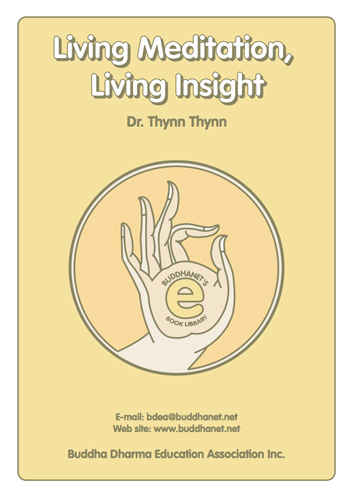 Most viewed - eBook Library Most viewed - eBook Library |

ksitigarbha.pdfSutra on Ksitigarbha Bodhisatta5407 viewsSutra on the Original Vows and the Attainment of Merits of Ksitigarbha Bodhisattva, translated from Chinese into English by Ms Pitt Chin Hui, President of the Singapore Regional Centre of the World Fellowship of Buddhist.
|
|

chandew.pdfThe Sweet Dews of Ch'an5377 viewsReverend Cheng Kuan
Ch'an or Zen is the outcome of meditation. There are two 'right'or 'highest' purposes of Ch'an. The first purpose is to achieve Dhyana. Dhyana is a combination of relaxation, concentration and calmness or tranquility. The second purpose is, using your very composed and tranquil mind, to observe clearly all the dharmas or phenomena externally and internally. As an outcome of Dhyana, you will be able to observe these phenomena very clearly because your mental mirror is very clear, for there are no more disturbances to veil it. Out of these observations will come Transcendental Wisdom, which in Sanskrit is called Prajna.
|
|

dependent_origination_the_buddhist_law_of_conditionality.pdf Dependent Origination: The Buddhist Law of Conditionality5303 views
|
|

livngmed.pdfLiving Meditation, Living Insight5252 viewsI wrote this book to encourage practitioners learning to meditate in daily life. In this sense, the articles are presented as a hands-on or, more accurately, a minds-on training manual. Although I discuss meditation in general, the real focus is on how the Dhamma brings us into spontaneous, wholesome and creative living. My objective in presenting the articles is to help the aspirant build up a solid foundation of mindfulness as a way of life rather than as a practice separated from daily living - Dr. Thynn Thynn.
|
|

artliv12.pdf5248 views
|
|

budrelig.pdfBuddhism as a Religion5247 viewsThe contents of this popular publication are a simple exposition of Buddhism as a modern way of life. This highly qualified Sri Lankan Buddhist scholar has a special gift of interpreting the Buddha's Teachings for people from every walk of life. His whole approach to the exposition of the Dhamma is governed by his deep concern for giving the ancient teachings a contemporary relevance, and has a meaning that cuts across the boundaries of time, space, race, culture and even religious beliefs.
|
|

lamdre.pdfLamdre - Dawn of Enlightenment5228 viewsThis is a series of lectures on the precious Lamdre teachings of the Sakya tradition of Tibetan Buddhism, given by Lama Choedak Yuthok. Lamdre is a complete path to enlightenment. The extraordinary qualities of Lamdre teachings are based on the Hevajra Tantra. They were initially received by the 7th century Indian Mahasiddha Virupa, who founded the lineage and transmitted the teachings to a line of disciples in India. Virupa also wrote pith instructions known as Vajragatha.
|
|

jataka_t.pdfBuddhist Tales for Young & Old (Vol. 2)5145 viewsThis is the second volume of fifty stories from the Jataka Tales - Buddhist Tales for Young and Old, interpreted by Ven. Kurunegoda Piyatissa, Maha Thera and told by Todd Anderson. These stories are not scholarly word-for-word translations as have been done by others. Rather these tales have been rewritten in modern English understandable by western readers. By reading these stories, children and adults can develop their knowledge and learn how to face the difficulties of modern life.
|
|

03_seeing_the_elements.pdf03 Perceiving Impermanence5087 viewsPatrick Kearney
Perceiving impermanence. Discusses the centrality of the concept of impermanence (aniccata) to the Buddha's approach to insight, and explore the elements of earth, water, fire and air.
|
|

dmind-wmind.pdfDharma Mind, Worldly Mind5083 viewsThe first part of the book tells us what we need to put in place for complete Dharma practice - the Eightfold Path, going for refuge, and the Bodhisattva spirit. In the second half the book shows us how to turn those requisites into a genuine living practice that embraces the whole of our life thus surely leading to the profound transformation that we all desire.
|
|
| 347 files on 35 page(s) |
 |
 |
 |
6 |  |
 |
 |
|
